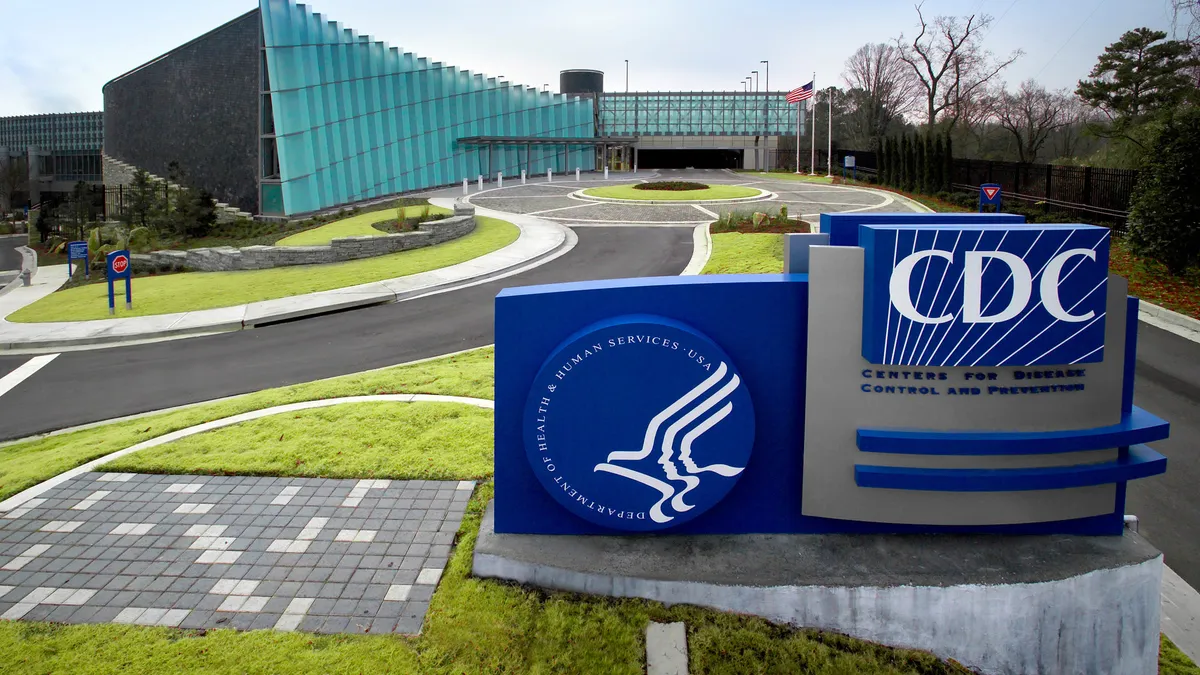Dive Brief:
-
The Centers for Disease Control and Prevention published interim guidelines Tuesday on the use of COVID-19 antibody tests in clinical and public health laboratories.
-
CDC is encouraging lab professionals to take steps to limit the risk of false positives, including by testing people twice to mitigate the imperfect specificity of the tests. The agency is ambivalent about which antibodies a certain test detects. "There is no identified advantage of assays whether they test for IgG, IgM and IgG, or total antibody," the CDC document says.
-
While true positive results may show an individual has some degree of immunity to the coronavirus, CDC said serologic tests should not be used at this time to determine if an individual is immune. Although the agency asserts that infectiousness is likely “greatly decreased” in the weeks after exposure to the virus, it wants to see more data before leaning on the results of antibody tests to inform public health advice.
Dive Insight:
The potential for serology tests, which detect antibodies, to identify people who are immune to the novel coronavirus is seen by some governments and public health officials as a way to help safely lift restrictions on closer physical contact.
In such a scenario, people who test positive for antibodies against the virus could be cleared to return to something resembling pre-pandemic life, enabling a restart to economies without as much worry about another spike in cases.
However, efforts to realize that vision have been stymied by false positives, which could lead someone to erroneously believe they have immunity to the virus, and insufficient understanding about the extent to which antibodies offer protection against reinfection.
While those uncertainties about antibody tests will hopefully only dissipate as more medical evidence accrues, in the meantime CDC's interim guidelines are an attempt to address existing concerns about false positives.
CDC is proposing that antibody testing be limited to products with high specificity and people who are more likely to have been exposed to the virus. In doing so, healthcare professionals can increase the positive predictive value of tests, eliminating the risk that testing programs will yield more false positives than true positives.
CDC does not name products that fit those criteria. However, the focus on false positives plays to the strengths of serologic tests sold by the likes of Abbott, Roche and Siemens Healthineers, which all have claimed specificities of close to 100%.
The guidelines also cover how healthcare professionals can reduce the rate of false positives when working with lower specificity tests or people who are less likely to have been exposed to the virus. In such situations, CDC is advocating the use of a second independent test to confirm positive results.
The agency set out the benefits of a two-test approach in a table detailing the positive predictive value of antibody tests in different scenarios. If 2% of people in a population have antibodies against the virus, testing them with a serologic assay with a 95% specificity will result in a positive predictive value of 26.9%, meaning there will be more false positives than true positives. Adding a second test raises the positive predictive value to 86.9%. The positive predictive value is higher in populations featuring more people who have been exposed to the virus.
The importance of avoiding false positives will increase if antibody testing comes to play a bigger role in informing restrictions on individuals. For now, CDC is advising serologic tests are used, in addition to PCR tests, in patients who present nine to 14 days after the onset of symptoms, and in people who may have late complications associated with COVID-19.
The CDC's guidance concludes antibody tests should not be used at this time “to determine immune status in individuals,” but said that thinking could change as new evidence emerges. At the same time, the agency contends serologic testing "can help determine the proportion of a population previously infected with SARS-CoV-2 and provide information about populations that may be immune and potentially protected."











